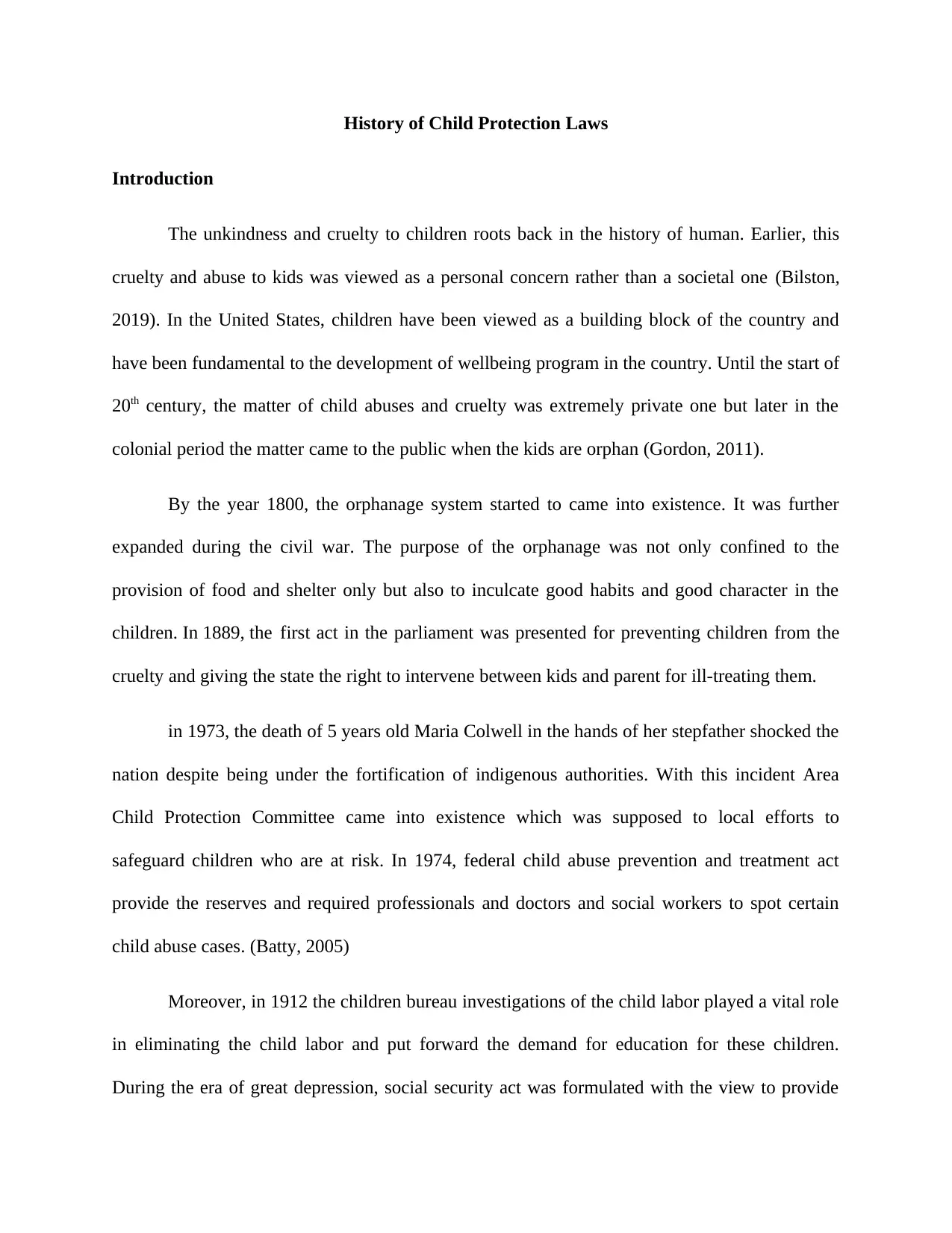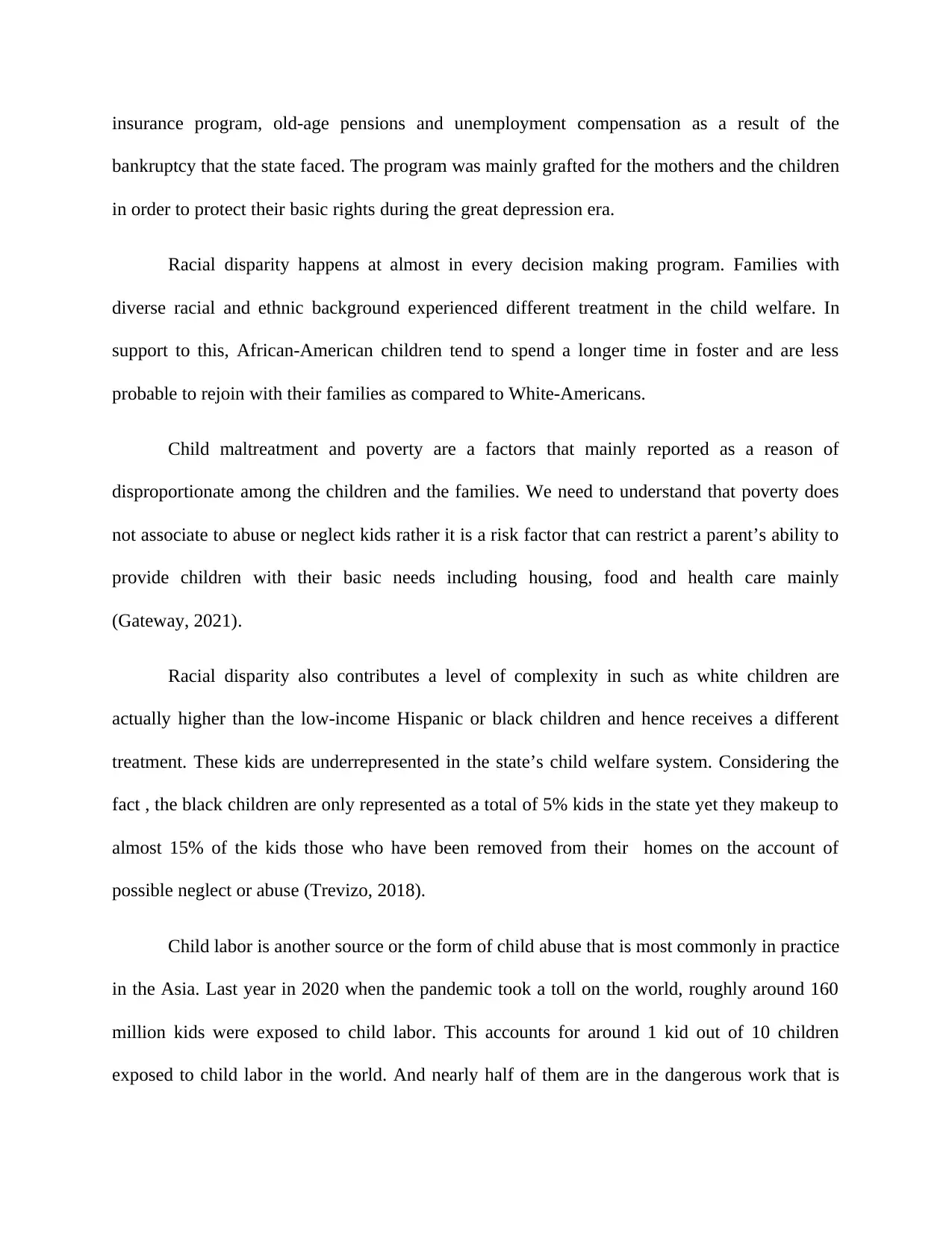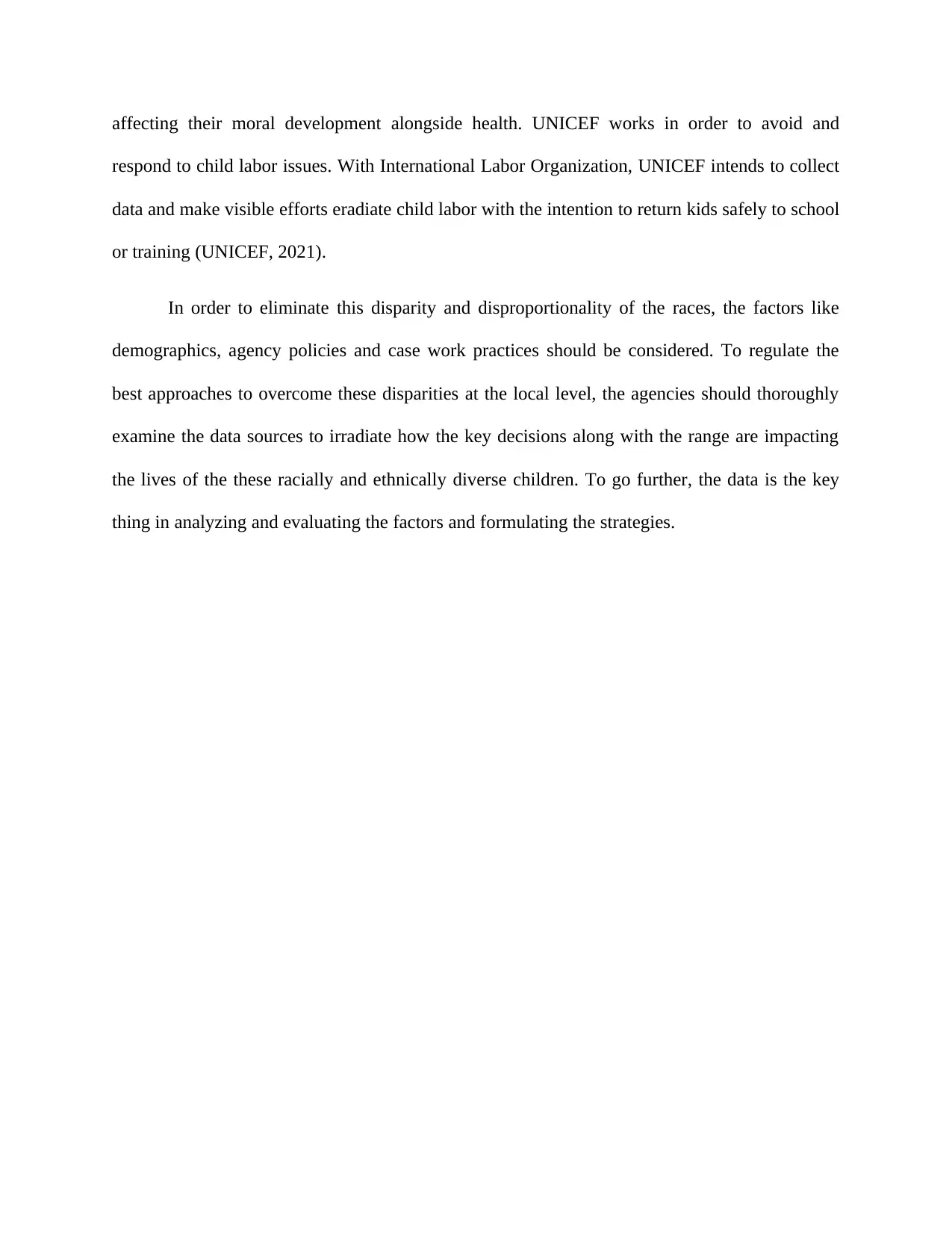A Comprehensive History of Child Protection Laws and Legislation
VerifiedAdded on 2022/01/16
|4
|961
|163
Essay
AI Summary
This essay provides a comprehensive historical overview of child protection laws, tracing their evolution from early concerns about child abuse and neglect to the development of modern legislation. It examines key milestones, such as the establishment of orphanages, the introduction of early parliamentary acts, and the impact of pivotal events like the death of Maria Colwell. The essay also addresses critical issues like child labor, the role of the Children's Bureau, and the impact of the Great Depression on child welfare. Furthermore, it highlights the persistent problem of racial disparity within the child welfare system, discussing how factors like demographics, agency policies, and case work practices contribute to disparities in treatment and outcomes for children from diverse racial and ethnic backgrounds. The essay underscores the need for data-driven approaches to identify and address these disparities, advocating for a more equitable and effective child protection system. The essay also mentions the global issue of child labor and the efforts of organizations like UNICEF to combat it.
1 out of 4









![[object Object]](/_next/static/media/star-bottom.7253800d.svg)